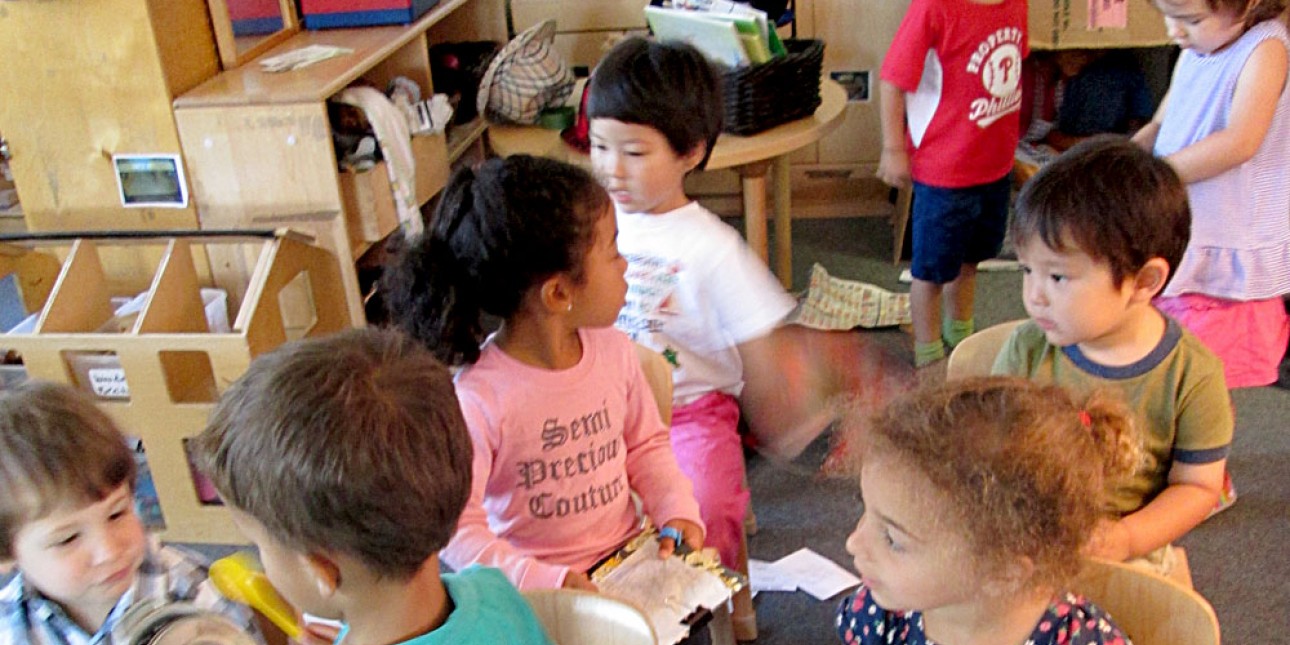In the Classroom: The Peanuts

Learning to Be Safe, Kind, Careful, Healthy, and Respectful
In the Peanut classroom, our daily routine gives children time for lots of free-play, while also providing structured experiences and food/rest for growing bodies and minds. The interactions that happen each day in the classroom let the Peanuts grow within a social setting.
Peanut teachers carefully frame what the children do and experience each day with 5 words – safe, kind, careful, healthy, and respectful.
We tell the Peanuts that these are the ways in which we need to treat each other, and it gives teachers and students alike positive language with which to talk about what happens to and around us each day.
By using this language and establishing these ways of being with one another as community norms, the Peanuts can explore what each term means to themselves and their peers as they try out different methods of socializing in our group.
Here we are setting the stage for how Peanuts treat others in life, understand another person’s point of view, and see others as both different and similar to themselves.
The Peanuts not only gain a positive idea of how to interact with others in kind, safe, careful, healthy, and respectful ways, but also begin to hone the tools they will need later in life.
Even with these five positive words flying around the classroom and mediating how Peanuts act on their own and towards one another, learning cannot happen without the experiences. It takes trial and error to really understand what these words can mean.
This is the REAL challenge for teachers (and parents) of young children. It’s all too easy to swoop in and stop a conflict before it begins, or to solve a problem for a Peanut when we see the problem coming.
In the classroom, Peanut teachers observe carefully and use good judgment as to when to step in to facilitate learning in a social context. It’s a fine balance when the goal is to help children learn from their experiences.
The key is to remember what it means to act in all 5 of these ways, notice aloud the successes, and be ready to empower young children when they need it most, rather than solve problems before they experience it as such.
Classrooms